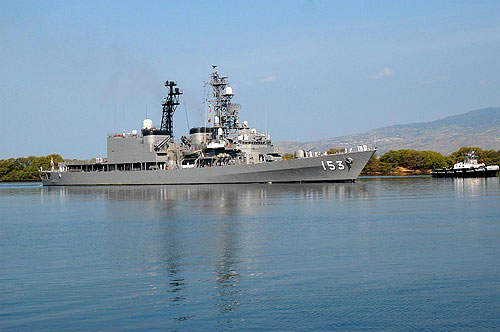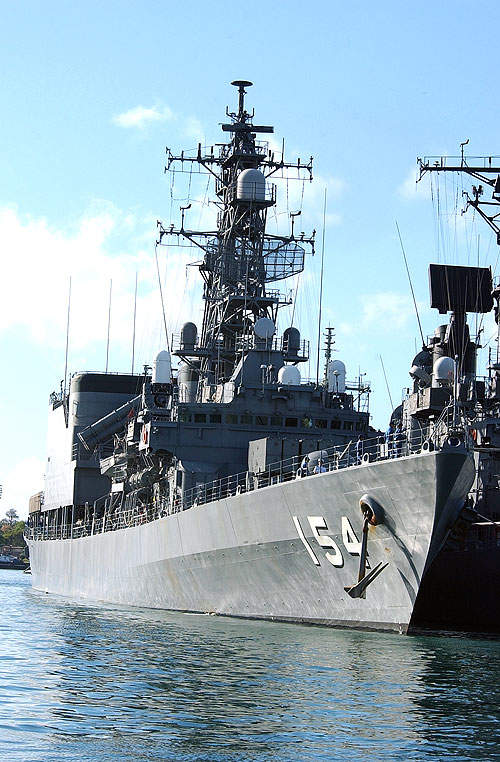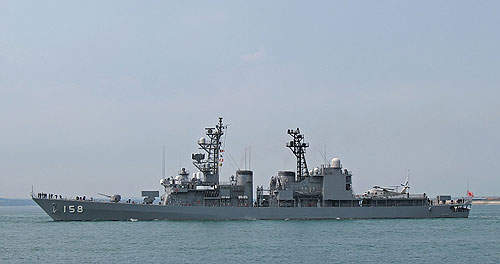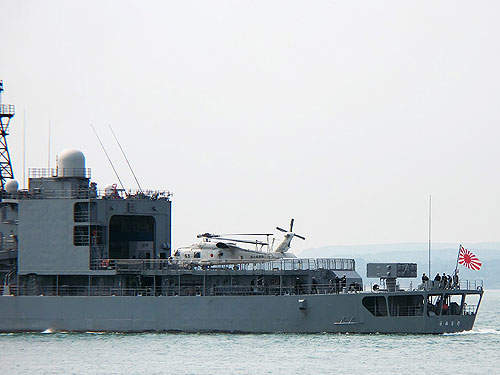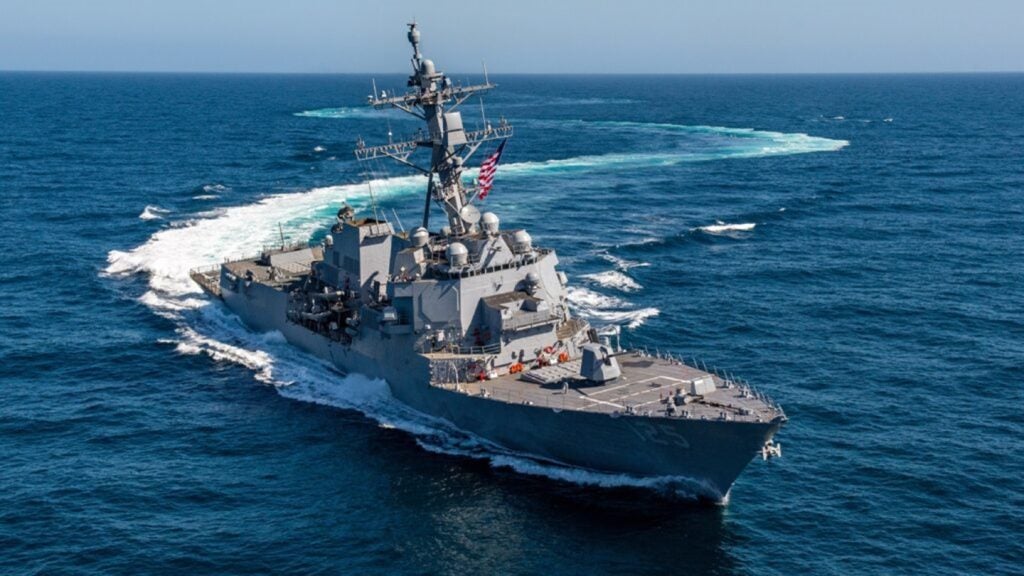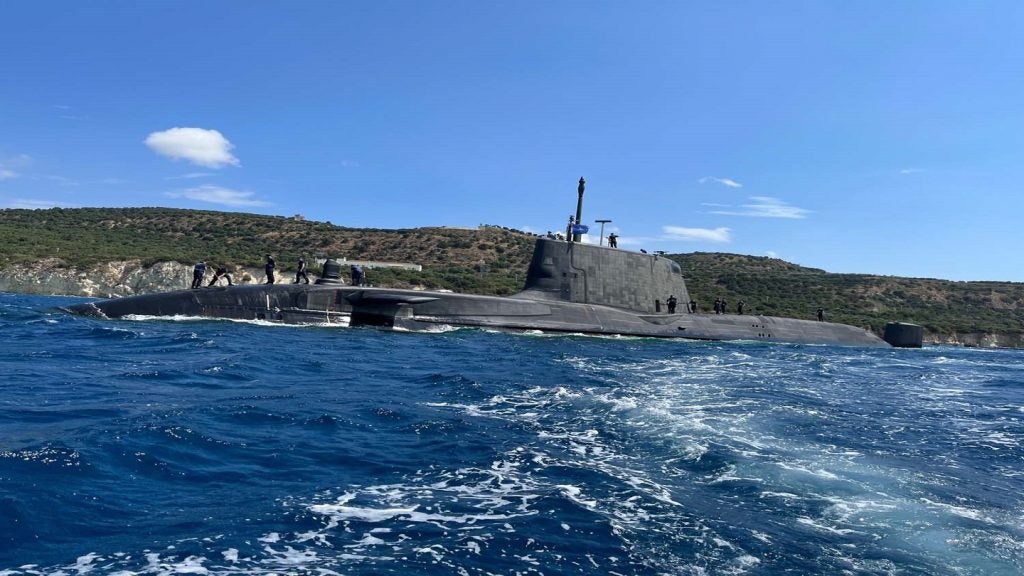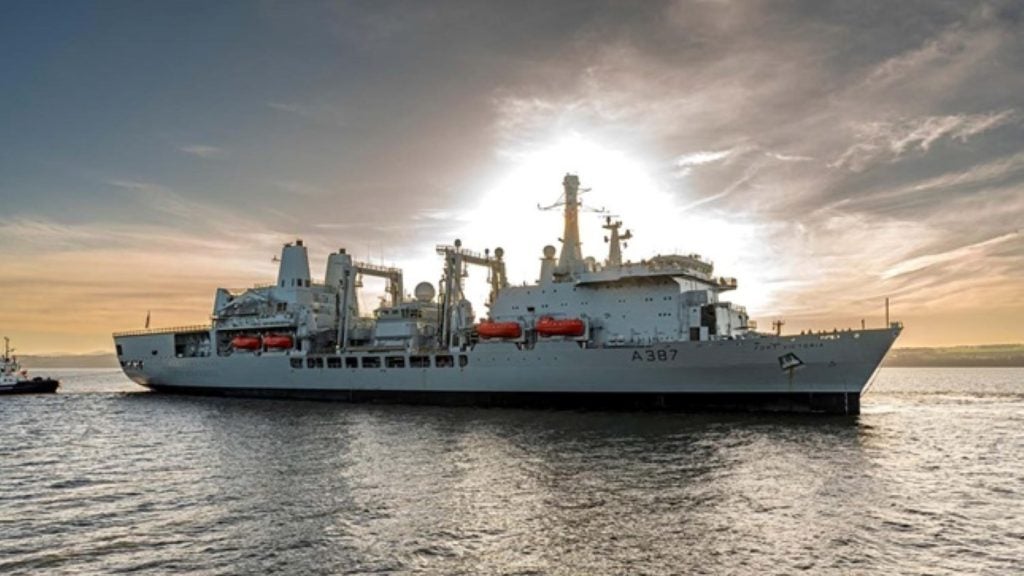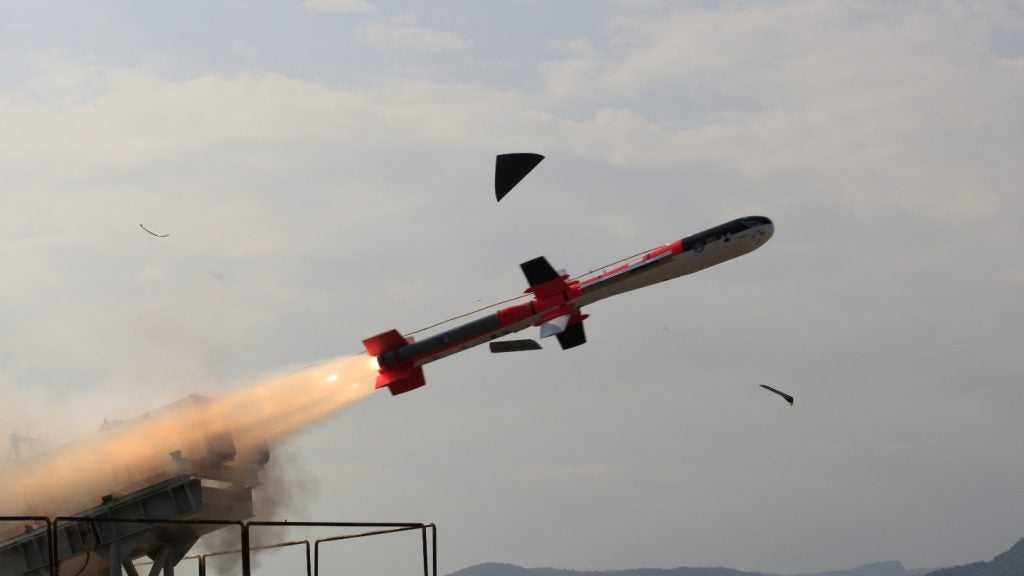The Asagiri class of destroyers are in service with the Japanese Maritime Self-Defense Force. They are an improved version of the Hatayuki-class destroyer, and has been succeeded by the Murasame-class destroyer.
Eight Asagiri class destroyers were built and commissioned between 1985 and 1991. The keel for lead ship in this class, Asagiri (DD151/TV3516), was laid at IHI shipyard, Tokyo, in February 1985. It was launched in September 1986 and commissioned in March 1988. The ship was converted into a training vessel (TV-3516) in February 2005.
Yamagiri (DD152/TV3515) was laid in February 1986 at Mitsui Tamano Shipyard. The destroyer was launched in October 1987 and commissioned in January 1989. Yamagiri was converted into a training vessel (TV-3515) in March 2004.
Yugiri (DD153) was laid in February 1986 at Sumitomo Heavy Industries’ Uraga Shipyard. It was launched in September 1987 and commissioned in February 1989. Amagiri (DD154) was laid in March 1986, launched in September 1987 and commissioned in March 1989. Hamagiri (DD155) was laid at Hitachi shipyard, Maizuru in January 1987. It was launched in June 1988 and commissioned in January 1990.
Setogiri (DD156) was laid in March 1987, launched in September 1988 and commissioned in February 1990. Sawagiri (DD157) was laid at Mitsubishi Nagasaki Shipyard in January 1987, launched in November 1988 and commissioned in March 1990. The last ship in the class, Umigiri (DD158), was laid in October 1988 and launched in November 1989 for commissioning in March 1991.
Asagiri class destroyer design
All of the Asagiri class destroyers feature an all-steel superstructure. The hull is extended and updated sensors are fitted on the ship.
The destroyer has a length of 137m, beam of 14.6m, draft of 4.5m and depth of 8.8m. It has a displacement of 3,500t, and can accomodate a crew of 220.
Command and control
The ship is equipped with OYQ-6/7 combat direction system. The system can transmit tactical data via Link-11. The Asagiri class is also fitted with a terminal for the MOF system, an operational C4I system that uses the Superbird SHF-SATCOM. The direction control system uses OYQ-5 digital communication system to transfer data between ship and onboard helicopter.
Asagiri missiles
Asagiri class destroyers are armed with two quad Harpoon SSM launchers carrying eight RGM-84C Harpoon surface-to-surface missiles. The Mk29 Sea Sparrow octuple launcher onboard can fire 18 short-range Sea Sparrow surface-to-air missiles.
Naval guns
The main gun fitted forward is an Otobreda 76mm, which has a range of 30,000m and can fire up to 120 rounds per minute. Two 20mm Mk15 Phalanx close-in weapon systems provide point defence against incoming anti-ship missiles and low-flying aircraft.
Anti-submarine warfare
The class is reasonably equipped for anti-submarine operations. Equipment for this role includes an Mk16 anti-submarine rocket octuple launcher and two HOS-302A triple 324mm torpedo tubes for Type 68 anti-submarine warfare torpedoes.
Sensors and radars
The sensor suite includes a towed tactical passive sonar array, Mitsubishi OQS-4A bow-mounted medium frequency sonar, OPS 20 navigational radar and OPS-28 surface search radar with the track-while-scan capability.
The first four vessels of the Asagiri class (DD151-154) are equipped with the OPS-14 air search radar; the remainder (DD155-158) with the OPS-24 air search 3D radar.
Aircraft
The hangar was enlarged to accommodate two helicopters, but the class was operationally configured to carry a single SH-60J(K) anti-submarine helicopter.
Countermeasures
The Asagiri class is fitted with two Mk36 six-barrelled super-rapid blooming offboard chaff launchers, which fire chaff or infrared decoys to deceive incoming anti-ship missiles. Other electronic warfare includes the NOLR-6C ESM, the OLT-3 jammer and a SLQ-25 Nixie acoustic torpedo decoy system.
Propulsion
The Asagiri class is powered by a combined gas turbine and gas turbine propulsion system consisting of four Kawasaki-Rolls-Royce Spey SM1A gas turbines. The four gas turbines drive two controllable pitch propellers to generate 543,000shp of power. This propulsion system provides a maximum speed of 30kt.

